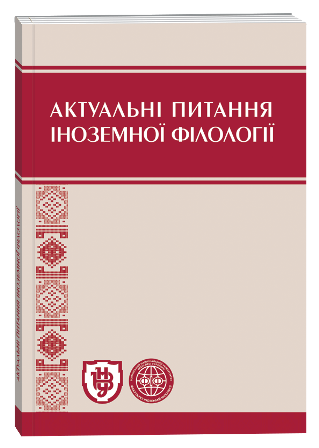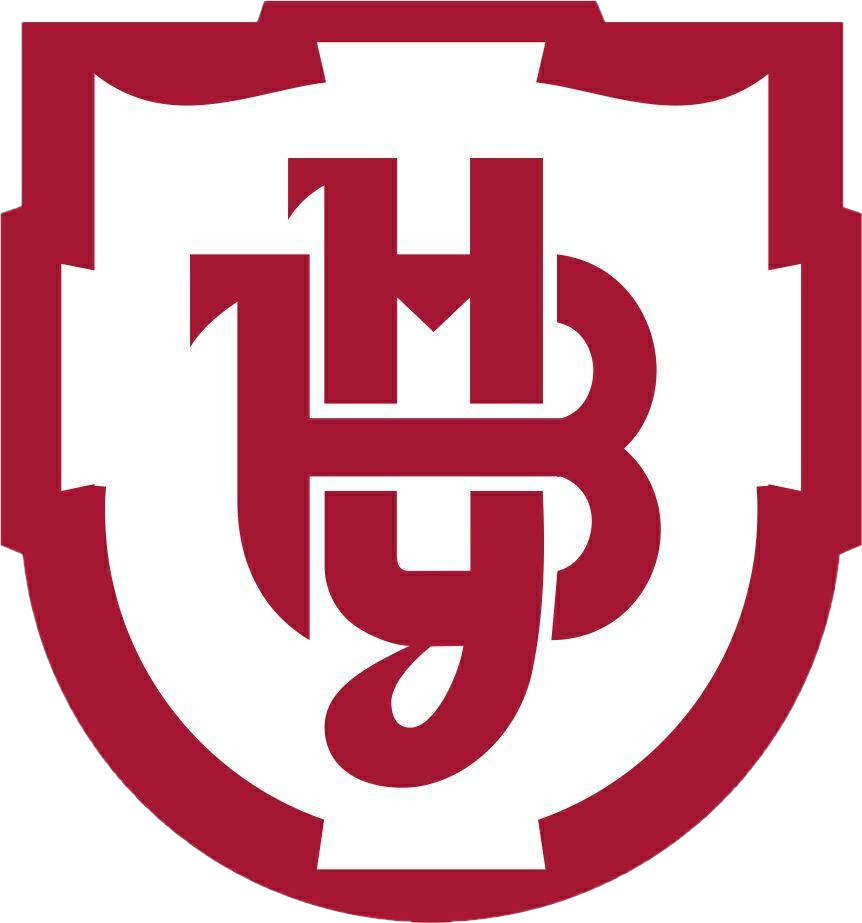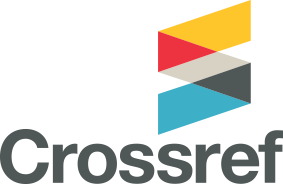FEATURES OF GENDER MARKED PHRASEOLOGICAL UNITS WITH MASCULINE ANTHROPOMETRIC COMPONENTS IN GERMAN
DOI:
https://doi.org/10.32782/2410-0927-2020-13-17Keywords:
phraseology, gender, gender marked phraseological unit, anthropometric component, masculinityAbstract
The article deals with the peculiarities of gender marked phraseological units with a masculine anthropometric component. The aim of the study is to reveal the specific features of gender marked phraseological units, the composition of which contains an anthropometric component that denote a man. The goal determines the solution of problems aimed at studying the main directions of gender researches in phraseology and analysis of the features of masculine anthropometric components with the general meaning «male person» in the composition of gender marked phraseology. Using the method of component analysis, phraseological units with the following anthropometric components were singled out: Kerl, Bube, Junge, Bursche, Knabe, Herr, Typ. Analysis of vocabulary definitions allowed to determine the semantic meaning of phraseological units with these anthropometric components, and the use of methods of correlation of linguistic and extralinguistic phenomena and linguacultural analysis helped to identify the interdependence of the social sphere of native speakers with the semantics of the studied linguistic elements. It has been established that the component Bube usually refers to males, but may also indicate a woman or lose gender features in its semantic. The component Kerl names and characterizes exclusively the male person. Phraseological units with Junge are synonymic to phraseological units with Kerl, characterize the male sex, may indicate a profession or occupation, or even semantize a non-traditional sexual orientation. Phraseological units with Knabe characterize a man in view of his age, but can serve as an appeal to him. The anthropometric component Herr has the greatest phrase-forming potential, conveys the ability to keep the situation under control, semantizes power or its absence, as well as profession or occupation. In addition, phraseological units with Herr are used to assess male identity. Given the negative characteristics of Herr acquires an ironic meaning given the primary semantics of this component (lord). Phraseological units with Typ denote a male person or a person in general.
References
Bylytsya, Ulyana. 2015. “Henderna relevantnist komparatyvnykh frazeolohichnykh nominatsiy lyudyny v anhlomovniy kartyni svitu”. Prykarpatskyi visnyk NTSh. Slovo 2(30): 158–167.
Dikunova, O. A., ed. 2017. Linhvokulturolohiya yak intehrovana haluz movoznavstva: naukovo-dopomizhnyy bibliohrafichnyy pokazhchyk. Kryvyi Rih: Biblioteka Kryvorizkoho derzhavnoho pedahohichnoho universytetu.
Fedina, Olena. 2020. “Frazeosemantychne pole kontseptu lyudyna v rosiys’kiy movi: funktsionalno-prahmatychnyy aspekt”. PhD abstract, Dnipro.
Hapyeyeva, Iryna. 2019. “Genderni komponenty ta zasoby stereotypizatsiyi v ukrayinskiy frazeolohiyi”. Aktualni pytannya humanitarnykh nauk 24 (1): 61–65.
Havrys, Vasyl and Prorochenko Oleksandr, ed. 1981. Nimetsko-ukrayinskyi frazeolohichnyi slovnyk. Kyiv: Radyanska shkola.
Kirilina, A. 2003. “Vozmozhnosti gendernogo pokhoda v antropooriyentirovannom izuchenii yazyka i kommunikatsii”. Accessed December 8, 2020. URL: http://www/gender-ryazan.ru/school/.
Lebedenko, Yu. M. 2017. “Linhvokulturolohichni osoblyvosti henderno markovanykh FO”. STUDIA SLOBOZHANICA. Visnyk vystavkovo-muzeynoho tsentru 3. (Materialy mizhnarodnoyi naukovo-metodychnoyi konferentsiyi „Slobozhanskyi humanitariy – 2017“ 3 bereznya 2017 r.). Kharkiv: FOP Tarasenko, 235–242.
Lexikon für Redewendungen. Accessed December 8, 2020. URL: https://www.redensarten-index.de/suche.php.
Nübling, Damaris. 2015. Von der ‚Jungfrau‘ zur ‚Magd‘, vom ‚Mädchen‘ zur ‚Prostituierten‘:Die Pejorisierung der Frauenbezeichnungen als Zerrspiegel der Kultur und als Effekt männlicher Galanterie? Accessed December 8, 2020. URL: https://www.germanistik.uni-mainz.de/files/2015/03/Nubling-2011-Pejorisierung-Frauen-bezeichnungen.pdf (дата звернення: 24.06.2020).
Online-Lexikon zur diachronen Phraseologie. Accessed December 8, 2020. URL: https://www.oldphras.net/web/ ( дата звернення: 24.06.2020).
Pavlenko, Nataliya. 2016. “Gender v strukture i semantike angliyskikh frazeologizmov-nominatsiy cheloveka po kharakteru mezhlichnostnykh otnosheniy”. Applied Linguistics: Scientific Journal. U.K.: Oxford University Press Issue2(5), Vol. 37: 1297–1303.
Ponomarova, O. I. 2018. “Gendernyy aspekt funktsionuvannya naymenuvan osib za rodom zanyat u frazeolohiyi ukrayinskoyi, anhliyskoyi ta nimetskoyi mov”. Naukovyy chasopys NPU im. N. P. Drahomanova. Seriya 9. Suchasni tendentsiyi rozvytku mov, Vyp. 16: 184–194.
Rozhon, Valentyna. “Frazeolohichni zasoby nominatsiyi lyudyny u skhidnopodilskykh hovirkakh”. Movoznavchyy visnyk. Zbirnyk naukovykh prats 12–13: 122–125. Accessed December 8, 2020. URL: http://surl.li/dpxs.
Sadovey, Mikhaela and Byalyk Vasyl. 2019. “Frazeolohichna kartynu svitu vs. movna kartyna svitu v suchasniy linhvistytsi”. Naukovi zapysky Tsentralnoukrayinskoho derzhavnoho pedahohichnoho universytetu imeni Volodymyra Vynnychenka. Seriya: Filolohichni nauky. Vyp. 175: 112–115.
Ternova, Nataliya. 2014. “Reprezentatsiya hendernykh stereotypiv u “Frazeolohichnomu slovnyku skhidnoslobozhanskykh i stepovykh hovirok Donbasu”. Linhvistychni doslidzhennya: zb. naukovykh prats KhNPU im. H. S. Skovorody, Vyp. 38: 59–64.
Tikan, Ya. H. and Yarmak D. O. 2017. “Frazeolohichni zasoby vyrazhennya kulturnoyi identychnosti predstavnykiv anhliyskoyi ta ukrayinskoyi linhvokultur”. Visnyk NTUU „KPI“. Filolohiya. Pedahohika 10: 50–53.
Vysotska, Nataliya. 2017. “Frazeolohichni zasoby realizatsiyi hendernykh stereotypiv”. Universitetskaya nauka 3: 154–155.
Zakharova, Ulyana. 2014. “Yazykovaya reprezentatsiya gendernykh smyslov kulturnogo izmereniya „maskulinnost’ / femininnost’“ v russkoy i angliyskoy frazeologii”. Sovremennyye problemy nauki i obrazovaniya 5: 499–503.
Zykova, Irina. 2003. Sposoby konstruirovaniya gendera v angliyskoy frazeologii. M.: Editorial URSS.







